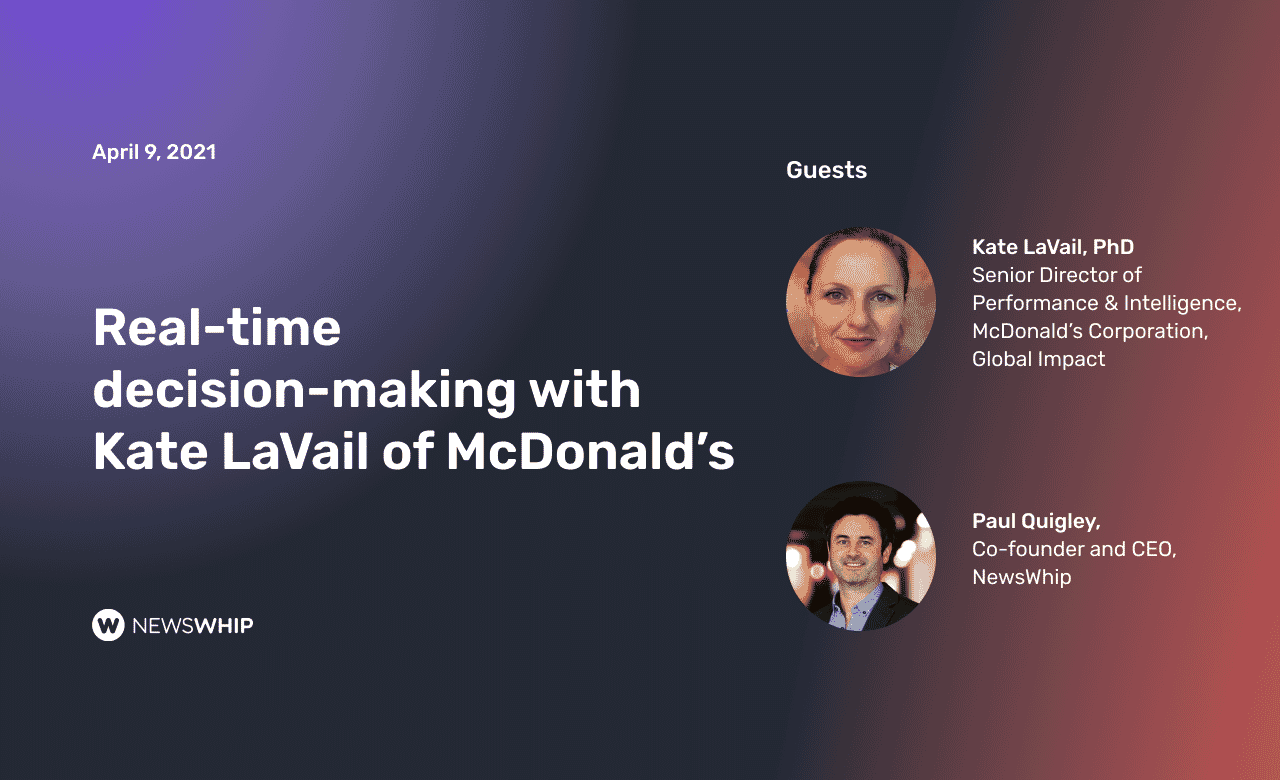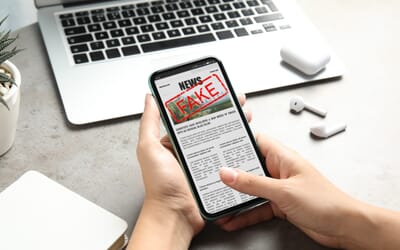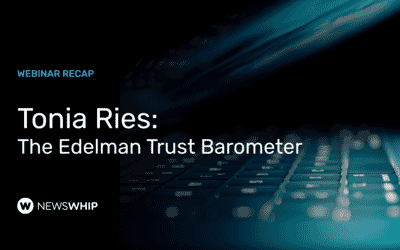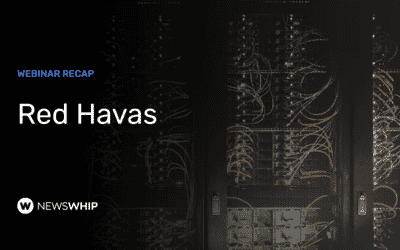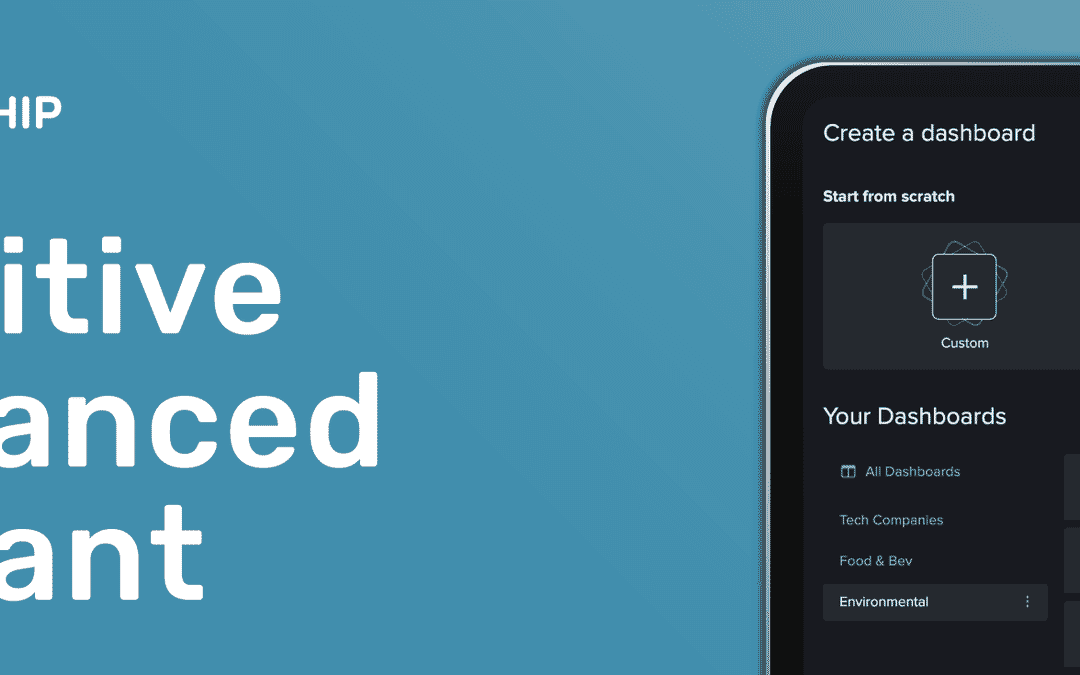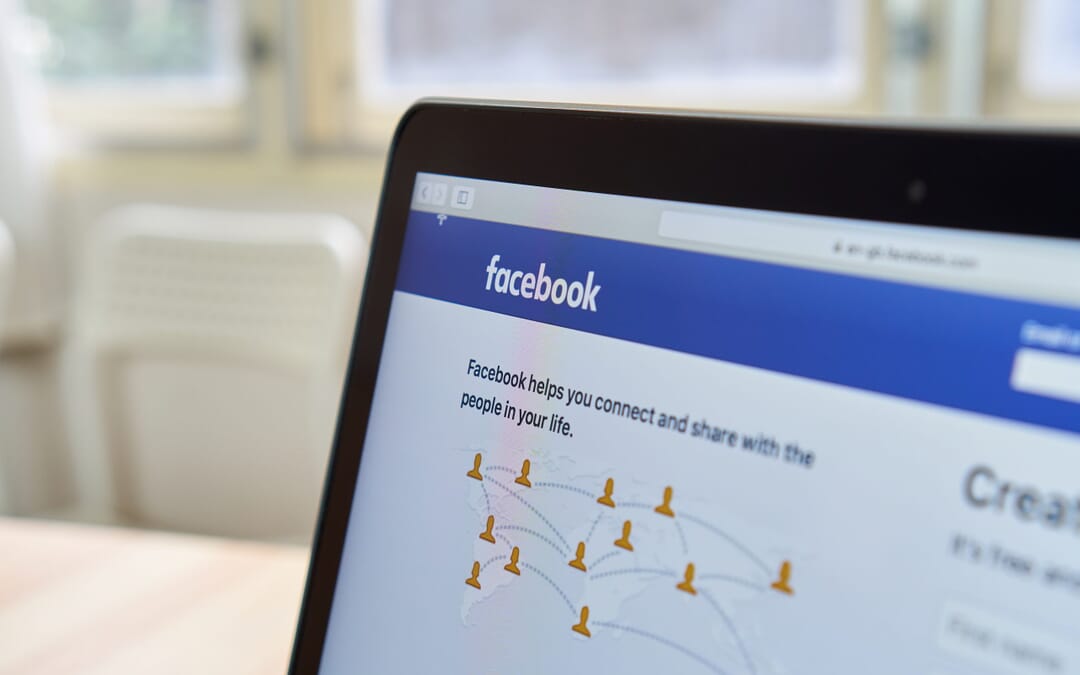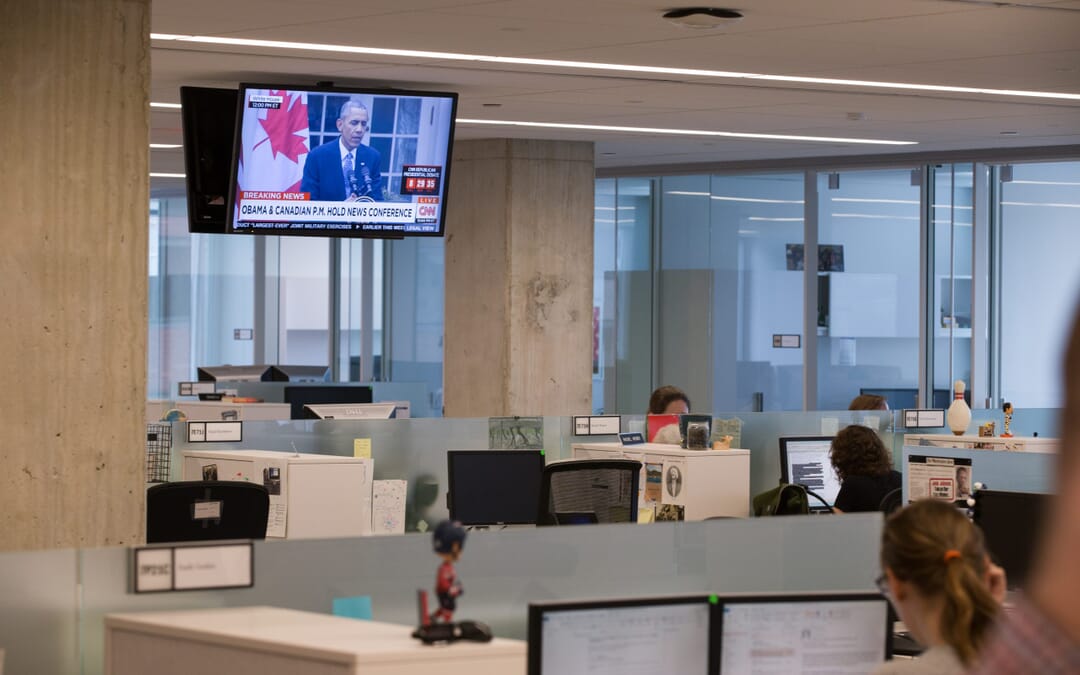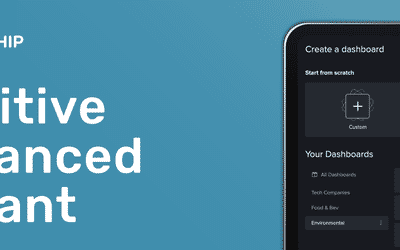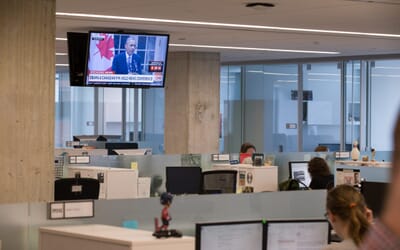Topics
McDonald’s Senior Director of Performance & Intelligence Kate LaVail, PhD joins NewsWhip’s CEO Paul Quigley to discuss the applications of inductive reasoning for weathering crises and evaluating opportunities to engage.
Guests
Senior Director of Performance & Intelligence Kate LaVail, PhD leads Performance and Intelligence for McDonald’s Global Impact Team. P&I is built to look forwards and back, integrating a reputation risk group with analytics, and measurement and evaluation. Increasing cross-functional awareness and expertise, Kate and her team serve as strategic advisors, focused on deep, mixed-methods evaluation of progress, sensitive early indicators of risk and opportunity, and aligned and integrated strategy development.
Note: This transcript has been modified for clarity and brevity.
Paul Quigley: [Starts at 0:55] So as we get started, Kate, you’ve got such an interesting background. I’m really excited about this conversation. You work with McDonald’s Global Impact team. You’ve got a master’s in Journalism, a PhD in Communications with an emphasis on both Data Analysis and concentration in Risk.
Before joining McDonald’s, you were VP of Data and Analytics at H+K Strategies, developing strategies for risk detection and prioritization. And prior to that, working with the health communication group at the CDC, with the National Center for Immunization and Respiratory Diseases. So we should reserve a whole other conversation for getting into that. But today, we want to talk about your current role. Can you tell us, what does the Global Impact team do within McDonald’s?
Kate LaVail: Well the role of the Global Impact team, it’s new. It really is probably only a few months old at this point. But the goal is to really be able to conserve our efforts and our intelligence to make our moves count from a reputational standpoint, and also to really drive the brand’s values forward. So to make sure that one hand is talking to the other and that we’re really making our moves count on the things that are considered critical for us. So we have our brand values, but I think that they manifest in the work that we do in very different ways. So it involves both being very proactive and looking for opportunities to advance the brand’s reputation, and to shape the world and to be able to become a trusted voice. But it’s also about risk and prevention and protecting the brand as well.
Paul: To do that, you’re drawing on a lot of data and analytics and quantitative information. Can you tell us a little bit about that? How does that come into your workflow?
Kate: Absolutely. So within performance and intelligence, we have three legs. One of those is data and analytics, which looks at both social and traditional media and really any other type of analytics that we need to do. And then we’ve got primary research, which is focused on being able to get both qualitative and quantitative insights. And then we also have reputational risk. And so those three groups work along with a number of external functions within McDonald’s, such as public affairs and government relations, sustainability to really develop a honed intelligence that is both strategic and also very much focused on the reputational role of McDonald’s.
Paul: In the first of those three, you were talking about both media and social media. Are you seeing those more in an integrated whole way? Because I understand a lot of people would see social media as someone else’s job and we talk to media, but you’re putting those together as a source.
Kate: Yes, absolutely. And that’s something I’ve always pushed for. I think from a publishing standpoint, it’s fine to have separate shops working on those things. But from an analytic standpoint, it’s really critical. It’s two parts of a whole to have social informing as well as traditional. The audiences may be different and the stakeholders may be different. That said, there are voices that need to be heard together at all times. I can’t recall a single instance where there was value in only looking at one or the other. It’s really critical to consider both together.
Paul: McDonald’s has its own insights team, how do you interface with the other parts of the organization on a day-to-day level? You’re getting all of this intelligence in, you’re thinking about the world outside, and how do you then interface and influence?
Kate: There’s two different answers that come to me. One is that of course, we have our measurement and evaluation where we’re helping to track our progress. The other is, I’d say, it starts out more tactically and then moves to more strategically so that we’re serving as partners with these groups along the way. So that from the jump, they’re getting the support of any data and analytics or any research that we can pull up front to inform initial strategies, and then we’re providing that support throughout and that intelligence throughout so that they’re always informed of how things are progressing, if there’s important feedback for that, if there’s new developments, media monitoring is especially critical in providing that real time response to things.
I think that goes for both our planned activities as well as our emerging crises, or if there’s policy moves that have implications for us, or that we might want to make sure that we have a position on. It’s really important that we’re there as those strategic partners so people don’t have to stop and think about, “Should I pull social media for this?” Rather, we already have the relationships and we have the tools and the skills to be able to just say, “This is what you need. Just tell us the question you’re asking and we’ll find the answer.”
Paul: That’s great. So it’s these critical moments of truth, crisis, critical campaign moments, you’re already in the room, you’re familiar with everything, you’ve got the data in front of you and advising the team.
Kate: Absolutely.
Paul: Brilliant. And if we talk about maybe focusing a little bit on the real time and on the more critical in the evolving media ecosystem issues, you’ve mentioned to us that you’re a proponent of using inductive reasoning in those situations, which is a turn of phrase that I love. Can you explain how that informs your approach and what that looks like within a situation?
Kate: So I would say we’re data agnostic. We take any and all data and we either quantitatively or qualitatively weight it accordingly depending on what the objectives are. So if we’re looking at consumers as our key stakeholder, we’re probably going to be weighting the different types of information very differently than if we’re looking at suppliers or policy opinion elites. So we do a lot of both, I would say, off the cuff and more traditional weighting. But at the same time, we are best since we’re brought in as partners, and we’re there along the journey to be able to react and respond and pivot as quickly as needed. It’s really important that we’re pulling in everything we possibly can and that we’re listening to the different sources of intelligence, that we’re really able to put it in context.
I would say that being able to provide that context both historical and forecasting is one of the more important items that we can add value. So I don’t really like to put… I’m not big on having very narrowly defined streams of data or roles and responsibilities. I really want everyone to be as informed as possible on my team so that they can recognize if something that seems slightly unrelated, if you didn’t know it well, that they can catch that and they can bring it to our attention. So I feel like taking an inductive approach makes everyone as aware as they possibly can so that they can recognize important pieces of content when they emerge.
Paul: Having an approach that involves taking in a lot of sources and looking at the full social media and media sphere can produce a lot of noise, right? And potential distraction and storms and teacups that may or may not be worth responding to. But you want to see everything. So how do you balance and filter?
Kate: Well it’s definitely a flood of information and I think that we’re constantly in a state of trying to avoid boiling the ocean. So that is a real challenge. That said, I think having incredibly skilled and talented team members who can think big picture certainly helps us to filter through the noise, also developing those relationships and those sources where we can lean on experts or SMEs to help us understand what really matters. I think one of the benefits of getting to work at McDonald’s is the brand has so much history. And there’s so many people who’ve been with the brand for so long. But there’s always someone who knows more than you do, who can guide you and help focus you. But at the same time, I would say it is the skill of my team to be able to really hone in on what matters more so than anything else. But that said, their relationships that they have with experts really makes their job possible as well.
Paul: Being on the data side of the equation here, we see data is such a powerful tool, but it’s really about what people can do with it and how people can contextualize it. And you’re in a great position to do that within the organization. Zeroing out for McDonald’s wider role and values, businesses and CEOs in recent years have become one of the remaining institutions that’s trusted in what’s become a more low trust environment suggested by Edelman’s Trust Barometer. How does that impact your communications strategy if you know that McDonald’s voice, maybe relatively speaking, is becoming more important and more trusted in the world?
Kate: Absolutely. And I mean I think that that’s really the excitement of what we do. Not only does it appear from the metrics that we were seeing that our leadership’s voice is becoming more and more relevant, at the same time, I think that that increases our responsibility. And I’m extremely grateful that we’re under an administration that is committed to being values driven, which gives us a huge opportunity. And coming from public health and a more pro-social background, it’s incredibly satisfying to be able to work towards having the brand and our leadership be positioned as values driven, that we’re progressing our identity and that we’re stepping up to the responsibility of a public who’s leaning more and more on corporate America for that trusted voice in that leadership. So I’d say it raises the stakes quite a bit. But at the same time, it’s not a relief, but a pleasure to be able to be a part of that. It just makes it matter even more.
Paul: It’s a minefield out there as well, right? As many people in communications, this week we’ve got voting restriction issues in Georgia, we’ve got different things happening in the world. What are the criteria that are important? And also the data inputs that are important for you in deciding whether to engage in a conversation during a wider crisis or issue in society?
Kate: We’re playing the long game as far as we’re really hoping to grow our brand’s reputation and to really start to stand for a values driven organization. And so with that, we’ve really, I think, especially in recent history, had to walk a fine line between politics and values. So for example, in the insurrection on January 6th, well all of us within corporate were just like the rest of, I’m going to say the U.S., but quite possibly the world. We were taken aback at the assault on democracy. And I can speak for myself personally that it felt like an attack on democracy, not a political move. That said, the data and analytics that we were able to pull in really helped us to confirm that hypothesis, that this really was about values. It was about democracy. It wasn’t political. And for a brand that serves 80% of the world’s population annually, we don’t really get into politics. That’s not where we feel like we have a place to play.
Rather, we do really care about the values of it and what it represents. And so to be able to confirm that this was an attack on our values above and beyond anything political, that gave us the space to really stand up. And Chris K. [Kempczinski] made what I thought was a very strong statement, condemning the actions and speaking up for democracy. So for us, we have that true north of is this values or is it political? And that’s when we can really make that decision whether or not we jump in or not, because at the end of the day, it’s not McDonald’s role to speak about politics. That’s not a place where I don’t think we have the responsibility or really the credibility to speak to that. However, when it comes to values, that’s something that we are 100% committed to. And so that’s an incredibly crucial divining rod in a way.
Paul: That’s really interesting and worth exploring a little bit, that was a moment of truth. And that’s a moment when the Global Intelligence team where you’re advising and saying, “Well how do we understand what’s happening here? How is the public understanding what’s happening here?” What signals indicated that this wasn’t a political or a partisan thing, that this was something that spoke to values was that what the public were saying or doing, or use stories or sharing or engagement? What were the indicators and how did you quickly draw up a way of saying this looks like this, or it looks like that?
Kate: Yeah. I mean I think it’s a bit of a soft science to be honest. But we certainly leaned heavily on both social and traditional media to understand the perceptions. I mean at the end of the day, perception is 99% of reality. So we did look at social media. We were able to contact some of our vendors who do polling, who were able to pull back quick polling numbers. We most certainly looked at traditional news and the way that the live coverage was being framed as well as more of the commentary. And it did seem that there was a general consensus. I don’t think that this was a tough call to make in that regard that others were perceiving this as we were, which this isn’t about who you want in the White House, this is something that is absolutely abhorrent and should not be allowed.
So I can’t say the judgment call was a tough one per se, because at least from where we were sitting, it seemed very clear that this was not okay on a much deeper level and just being mad about an election. But that said, we most certainly did our due diligence and checked with social media. And we checked in certainly with specific influencers as well, especially within policy, just to get a read on how this was being interpreted. So yeah. I mean again, it was pretty easy to confirm what we were feeling.
Paul: I think that often can be the role of data is to dispel any doubt about what seems like the right thing, but we’re still not quite sure what’s happening in the outside world. But if you’ve got good real-time data, you can dispel those last outs and take the stand, right?
Kate: Really, it serves as a gut check too, because while I think we all feel like we have our finger on the pulse of what the general population is feeling or interpreting about an event, it’s incredibly reassuring to be able to go to tools like NewsWhip and to be able to confirm that what we’re seeing is how it’s being seen. And I think without that, we have blinders on and we don’t necessarily know for sure that we’re perceiving this as others are. So it’s great for confirmation.
Paul: I’ve got my cognitive biases. I sometimes open up Spike expecting to see a thing. And I’m like, “Oh, I’m sure this is how it’s playing out.” And then I’m like, “Wait, what?”
Kate: Absolutely.
Paul: So let’s discuss maybe messaging more generally. You’re often crafting messages for different audiences because you’re looking at corporate audiences of McDonald’s as well as the public. Does it inform any corporate communications and shareholder type communications as well as public communications?
Kate: Absolutely. So within our role, we really have to look across our stakeholder groups. And so while I think there’s quite a bit of attention within other functions in McDonald’s on the consumer angle, we really do within corporate comms need to look at all of our stakeholders and we need to make sure that we’re both messaging and tailoring appropriately for who we’re trying to talk to. While we do have our true north of our values, at the same time, with the same values we might need to communicate that very differently. So it’s always helpful both from a quick and dirty qualitative approach to look at the language being used and to look at the priorities within the messaging that are working and what’s not working. It’s also, I think, just as important to be able to sense when we do speak up how it’s being interpreted, what we can do better next time, with an eye on always optimizing. So it’s a constant read that we go into both before and after any messaging.
Paul: I know that you’re thinking about behavioral economics and psychology and things as well. I think you may be the first doctorate holder in the space of communications who I’ve interviewed. Is there anything you’re still carrying through from your research that’s informing your day to day?
Kate: Absolutely. I would say there’s a number of behavioral theories that of course are really helpful with the work that we do more than anything. My director, she also has a doctorate and has a history at the CDC too. And I think we’ve talked about it more than once how helpful a background in public health has been, not just because we’re in the days of COVID, but in understanding messaging and understanding how we drive values forward, it’s I think much more challenging to push for good than it is to push for bad, not to be overly simplistic. But it’s really hard to get credit for doing the right thing. And working in vaccines, we certainly have plenty of experience of trying to push this pro-social behavior that didn’t necessarily have any personal benefit depending on how you spun it.
So I think that within public health, there’s substantial knowledge and expertise that can be really helpful within this environment, both within a data and analytics compartment as well as behavioral change, any behavioral science or social science. It’s very useful to be able to lean on tried and true methods and theory. And also, I would say within public health, you’re always dealing with multiple stakeholders as well. It’s just a given. And so that certainly I think has been a great proving ground for developing those skills and the need to tailor to very distinct audiences.
Paul: That’s really interesting. What I really admire, and it’s unexpected maybe, is how pragmatic it is? It’s an extremely pragmatic field, public health communications. It’s like how do we get the message out? What are the things that we know? Why do we think we know them? It’s quite open and quite pragmatic.
Kate: Absolutely. Yeah. It has to work. In public health, you have to be able to see the results. It’s great if it’s a sound or a fancy theory, but unless it’s actually doing the job, it doesn’t count for anything. And so I think the folks that I found even when working with other health professionals, the folks in public health are probably the most pragmatic because they understand that just because it’s the right thing to do doesn’t mean people are ever going to do it, that you have to find those sweet spots where somehow they feel motivated to do it. Because it’s the right thing to do is the least effective motivator ever. And I think going up against that challenge really does make you stop and see where you are and the toys that you’re actually playing with, because you can’t theorize yourself out of that.
Paul: Is the impact happening or not?
Kate: Exactly.
Paul: I suppose bringing it back up to assessing impact, how do you know today if a message lands? Are you looking at different audiences? What are the KPIs that you’re looking at in your reporting today with reporting and impact being such a big deal today in communications and trying to get that right?
Kate: Absolutely. And I think for us, because we’ve just been through this reorg, our defined KPIs are still a bit of a work in progress, but we’re getting there. I would say there’s our short-term KPIs of we have the luxury of not necessarily having to rely on a business outcome as a KPI, but there are those items that we want to make sure that our short-term messages are getting through and there’s reporting for that, which is great. We also have the privilege of really working the long game with reputation. It may be that we have something that doesn’t necessarily take off immediately, but because we know, there’s plenty of agreement and understanding that we’re looking for change that could be three, five years out. And so we’re both playing a game of inches and yards. And so I think that that gives us a little bit more latitude to go for a moderate win that contributes to that long-term goal over having to necessarily just knock it out of the park every single time.
There’s not going to be one instance where we’re really able to step up and live our values and be perceived as highly respected, and credible, and having a very strong voice for values, that will never happen in one instant. That’s going to happen with consistent commitment and engagement on our part over time. And so I would say that most of our KPIs that we have planned, there’s those quick ones that we need to turn around and just show are we making two points on trust or something like that? That’s great. But what’s really matter is how we’re charting this over three years, over five years, how we’re taking steps to both protect our brand and advance that at the same time. And how we’re doing that efficiently, sure, but most importantly, effectively.
Paul: I suppose this might be our last question. As someone who is new to working in crisis management, what are the really important things to pay attention to? Or maybe another way of thinking about this is what do you think is underappreciated or the thing that you would over-index on when it comes to making decisions in these acute times? Maybe it’s a crisis, maybe it’s just an acute time and there’s a big decision to be made like with the insurrection.
Kate: I would push back a bit on the premise and answering that just a little bit, because I think historically, McDonald’s, our crisis game is good. Our team has well conditioned muscles on crisis response. Where I would say we should be really continuing to focus our attention now is on risk and as that other side to crisis. So a crisis is a risk manifest. The more we can get in front of it, the more we can nip it in the bud by seeing it early, seeing it before it’s a problem, by taking steps to really write our steps, that’s how we’re going to make the most progress.
Where my interest certainly resides is in how are we maximizing our ability to see around corners? How are we maximizing our ability to read the tea leaves and see what’s coming to look at the general sight guides and be able to determine how we would fare in our current state versus if we tweet something or other, how that would show up? And so I do think that probably the most important part of crisis work would be learning from that crisis so that you could then do more risk work at prevention.
Paul: I think that’s a brilliant insight. I think that’s absolutely where our minds should be at. They don’t come out of nowhere. They come in on vectors that we can predict and figure out and on the backs of narratives that we can predict and figure out. That’s brilliant, Kate. This has been a really awesome, interesting conversation. I’m very grateful for you joining us here today. For everyone who’s tuned in, we’re going to in two weeks time, in fact Thursday week, we’re going to be hosting Kirsty O’Connor, the Director of Content, Data and Digital for Middle East and Africa, and David Soutoul, Data Analytics Manager for APAC of Hill+Knowlton Strategies. So your alumni are going to be on the Pulse.
Because we have specialists in the Middle East and Asia, we’re going to be starting earlier at 9:00 AM GMT. So not a great overlap for the audience I’d say who are here today. That’s I believe 4:00 PM for people in Singapore. And we’re going to be talking about listening and learning from customers, navigating market nuances and listening and monitoring and being locally relevant at scale. And that should be a really brilliant conversation. But right now, I want to thank Kate for joining us and wish you all a great weekend. Thanks, Kate.
Kate: Thank you. My pleasure.
View our on-demand webinars
Lessons for brands from the frontlines of social media manipulation
Governments globally, particularly in conflict zones, confront the persistent threat of social media manipulation, as evidenced by ongoing information warfare in regions like Ukraine. However, there are dedicated organizations such as Valent Projects actively working...
When distrust defines society’s relationship with government & media
Humanity’s potential for progress and creativity risks sustained damage when distrust is the foundation and society is no longer characterized by positive relationships with government, media, business, and non-governmental organizations (NGOs). Still, data from this...
Mastering the balance of mixternal communications
In the midst of talent wars, mixternal communications is a juicy topic at companies intent on attracting and retaining employees. We examine addressable opportunities to bring balance to internal and external communications. For the first NewsWhip Pulse episode of...





